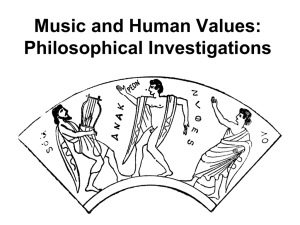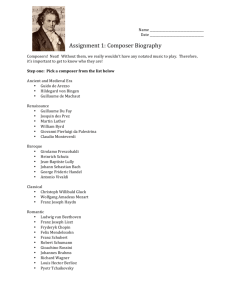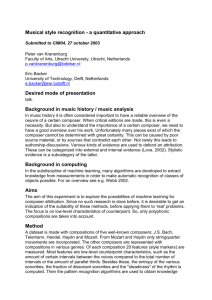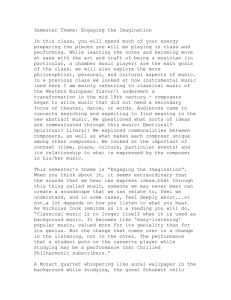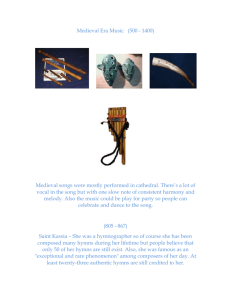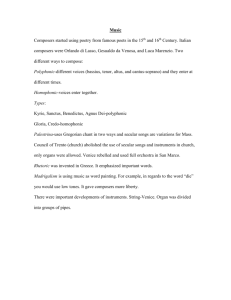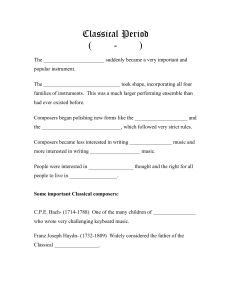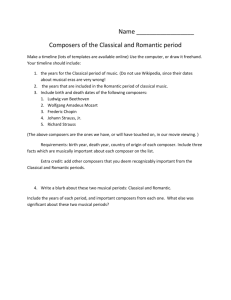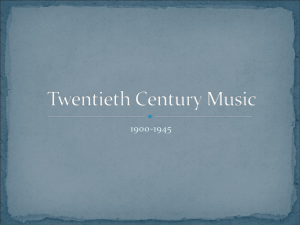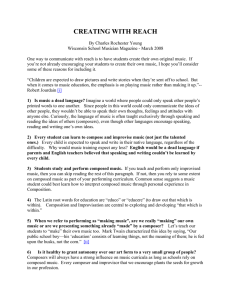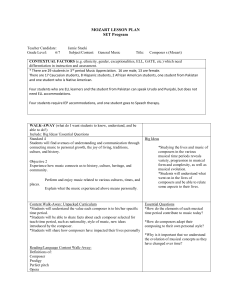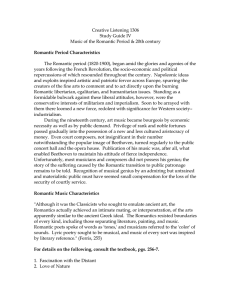final exam review sheet - may 2013
advertisement
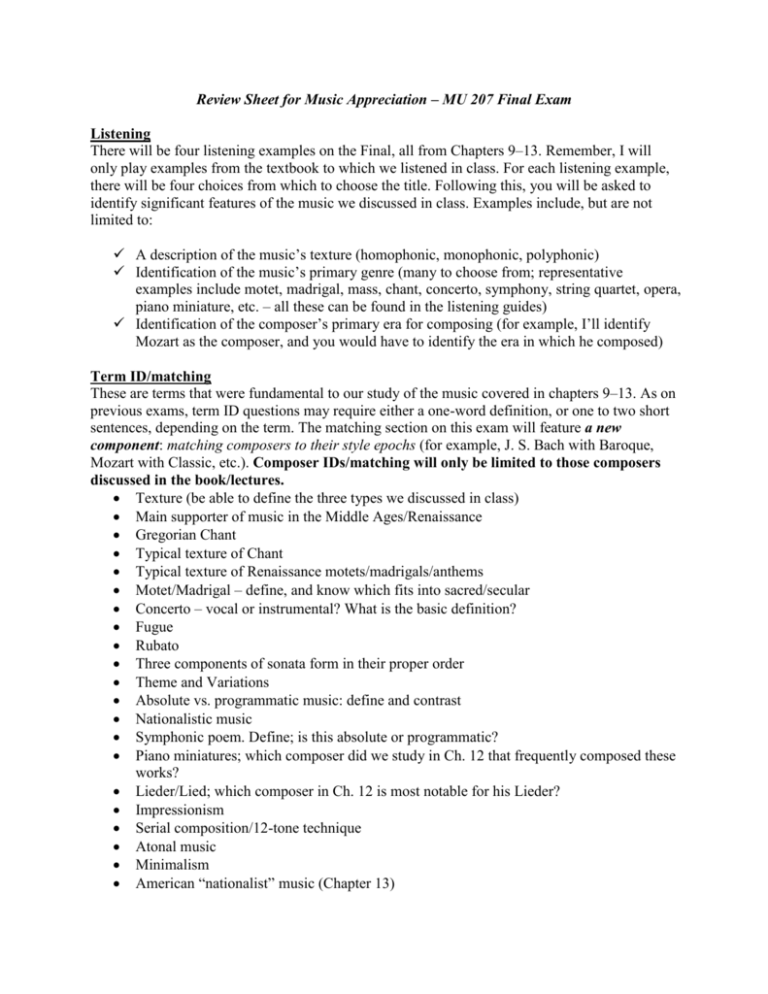
Review Sheet for Music Appreciation – MU 207 Final Exam Listening There will be four listening examples on the Final, all from Chapters 9–13. Remember, I will only play examples from the textbook to which we listened in class. For each listening example, there will be four choices from which to choose the title. Following this, you will be asked to identify significant features of the music we discussed in class. Examples include, but are not limited to: A description of the music’s texture (homophonic, monophonic, polyphonic) Identification of the music’s primary genre (many to choose from; representative examples include motet, madrigal, mass, chant, concerto, symphony, string quartet, opera, piano miniature, etc. – all these can be found in the listening guides) Identification of the composer’s primary era for composing (for example, I’ll identify Mozart as the composer, and you would have to identify the era in which he composed) Term ID/matching These are terms that were fundamental to our study of the music covered in chapters 9–13. As on previous exams, term ID questions may require either a one-word definition, or one to two short sentences, depending on the term. The matching section on this exam will feature a new component: matching composers to their style epochs (for example, J. S. Bach with Baroque, Mozart with Classic, etc.). Composer IDs/matching will only be limited to those composers discussed in the book/lectures. Texture (be able to define the three types we discussed in class) Main supporter of music in the Middle Ages/Renaissance Gregorian Chant Typical texture of Chant Typical texture of Renaissance motets/madrigals/anthems Motet/Madrigal – define, and know which fits into sacred/secular Concerto – vocal or instrumental? What is the basic definition? Fugue Rubato Three components of sonata form in their proper order Theme and Variations Absolute vs. programmatic music: define and contrast Nationalistic music Symphonic poem. Define; is this absolute or programmatic? Piano miniatures; which composer did we study in Ch. 12 that frequently composed these works? Lieder/Lied; which composer in Ch. 12 is most notable for his Lieder? Impressionism Serial composition/12-tone technique Atonal music Minimalism American “nationalist” music (Chapter 13) Composer matching As we discussed in class, my expectation is that you are able to identify significant composers of each era, particularly those that we discussed in class. The composers will be listed, and you will be responsible for placing them in their specific era. (Notice how Beethoven fits in both Classic and Romantic eras). Since the names of the composers will be on the final exam (i.e., I will type them), you will not need to worry about correct spelling. Do not ignore this portion of the test in your studying! Composers you should know: Renaissance Baroque Classic era Palestrina Josquin des Prez J. S. Bach G. F. Handel Vivaldi Haydn Mozart Beethoven Romantic (Beethoven) Brahms Chopin Schubert Tchaikovsky Verdi Wagner 20th C. European Debussy Stravinsky Schoenberg 20th C. American Ives Copland Philip Glass
